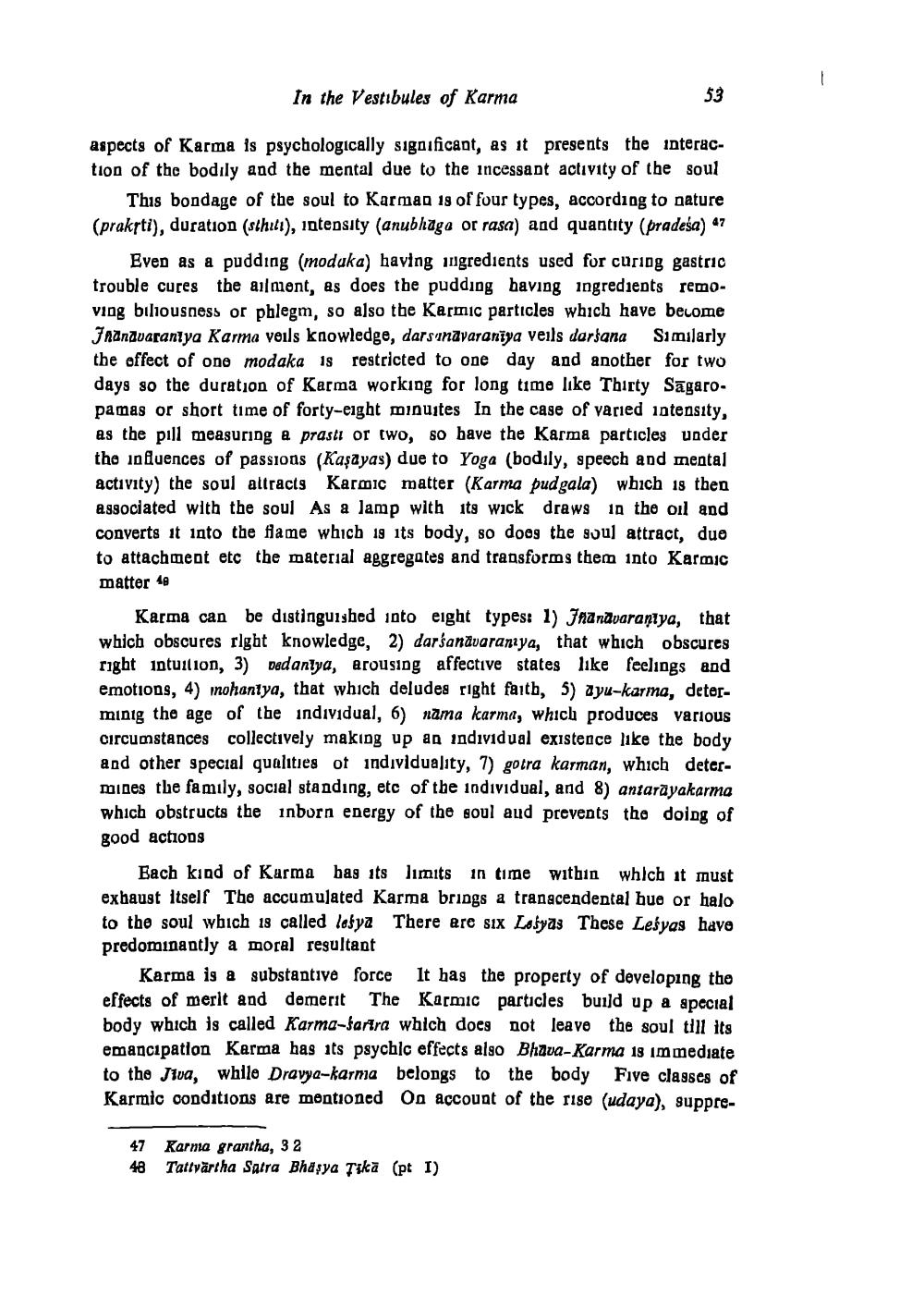________________
In the Vestibules of Karma
aspects of Karma is psychologically significant, as it presents the interaction of the bodily and the mental due to the incessant activity of the soul
53
This bondage of the soul to Karman 19 of four types, according to nature (prakrti), duration (sthiti), intensity (anubhaga ot rasa) and quantity (pradeśa)*7
Even as a pudding (modaka) having ingredients used for curing gastric the ailment, as does the pudding having ingredients removing biliousness or phlegm, so also the Karmic particles which have become Jnanavarantya Karma veils knowledge, darsanavaraniya veils dariana Similarly the effect of one modaka is restricted to one day and another for two days so the duration of Karma working for long time like Thirty Sagaropamas or short time of forty-eight minuites In the case of varied intensity, as the pill measuring a prasti or two, so have the Karma particles under the influences of passions (Kaşayas) due to Yoga (bodily, speech and mental activity) the soul attracts Karmic matter (Karma pudgala) which is then associated with the soul As a lamp with its wick draws in the oil and converts it into the flame which 19 its body, so does the soul attract, due to attachment etc the material aggregates and transforms them into Karmic matter 48
Karma can be distinguished into eight types: 1) Jnanavaraniya, that which obscures right knowledge, 2) darkandvaranya, that which obscures right intuition, 3) vedantya, arousing affective states like feelings and emotions, 4) mohantya, that which deludes right faith, 5) ayu-karma, determinig the age of the individual, 6) nama karma, which produces various circumstances collectively making up an individual existence like the body and other special qualities of individuality, 7) gotra karman, which determines the family, social standing, etc of the individual, and 8) antarayakarma which obstructs the inborn energy of the soul aud prevents the doing of good actions
Each kind of Karma has its limits in time within which it must exhaust itself The accumulated Karma brings a transcendental hue or halo to the soul which is called lefya There are six Lalyas These Lelyas have predominantly a moral resultant
Karma is a substantive force It has the property of developing the effects of merit and demerit The Karmic particles build up a special body which is called Karma-tartra which does not leave the soul till its emancipation Karma has its psychic effects also Bhava-Karma 18 immediate to the Jia, while Dravya-karma belongs to the body Five classes of Karmic conditions are mentioned On account of the rise (udaya), suppre
47 Karma grantha, 32
48
Tattvärtha Satra Bhasya Tika (pt I)




